【第六十七回目】
山本山:お茶を売って325年。いま、世界企業へ。
Yamamotoyama: Selling Tea for 325 Years—Now Globally
Yamamotoyama: Selling Tea for 325 Years—Now Globally
| セインさん、今日お訪ねするのは、お茶と海苔の老舗「山本山」です。 今年で創業325年という長い歴史のあるお店ですよ。 Thayne-san, today we’ll be visiting a very old tea and seaweed nori shop called Yamamotoyama. It has a long history of 325 years. http://en.wikipedia.org/wiki/Nori |
|
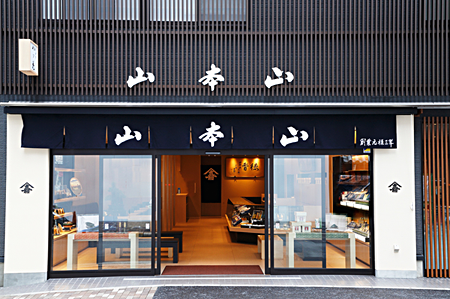 |
|
| 有名なお店ですね。「上から読んでも山本山、下から読んでも山本山」というコマーシャルもよく知っています。 Yes, it’s famous. I know the commercial with the slogan, “Read from top or bottom, it’s Yama-Moto-Yama,” |
|
| (山本) | こんにちは、セインさん。山本山の山本嘉一郎です。 Yamamoto: Hello, Thayne-san. I’m Kaichiro Yamamoto. |
| こんにちは、山本さん、はじめまして。山本山はとても古いお店だと聞きましたが、山本さんは何代目にあたるのですか? Good afternoon, it’s a pleasure to meet you. I’ve heard that your shop has been in business for a very long time. May I ask what generation you are? |
|
| (山本) | 10代目です。 Yamamoto: I’m the tenth generation. |
| 10代目として老舗を継いでいくというのはとても大変なことだと思うのですが、山本さんは学校を出られたあと、どこか別の会社で修業したり、経営哲学を学んだりしてから入社されたのですか? It must have taken an incredible amount of work to keep your shop in business for ten generations! After graduating from school, did you train at some other company or study management somewhere before joining the family company? |
|
| (山本) | いえ、私は大学を出たあと、すぐにここに入社しました。よその会社に入っても意味がないだろう、必要なことは必要なときに、自然と学べるだろうと思ったんです。 自分の体の中に流れている血の騒ぎを感じていれば、それでいいと。そして自分の中に何があるかを知ることができたら、それを見つけられたら、それが答えだろうと。 No, I actually joined the company immediately after university. I didn’t think I needed to join a different company first. I thought I could pick things up as necessary along the way and just learn naturally. I thought that the feeling of excitement flowing through my veins was enough. If I could know what my potential was, if I could find that, that would be my answer. |
| すごい言葉ですね! 老舗のご主人だからこそ言えることですね。 Impressive words! I’d expect nothing less from the owner of a company with such a long history. |
|
| (山本) | 山本山は、初代山本嘉兵衛が元禄3年(1690)にお茶や紙を売る店として江戸で創業しました。それから48年後に、初代は山城国の永谷宗七郎(永谷園さんの祖先)という方が作った緑色をしたお茶を知って、これを売っていこうと決心します。当時、お茶といえば、その名のとおり茶色でしたから、緑色のお茶なんて誰も買いません。しかし、嘉兵衛はその色や味の上品さにほれ込み、「天下一」の号をつけてアピールしました。いま、「煎茶」と呼ばれて、皆さんがよく飲んでいる原形のお茶です。 Yamamoto: The first generation owner, Kahei Yamamoto, founded the shop in 1690 and sold tea and paper. Forty-eight years later, he found out about a green tea made by Soshichiro Nagatani of the old Yamashiro Province, and decided to sell it in his shop. At the time, tea was generally brown in color, and no one bought green-colored tea. Nevertheless, Kahei fell in love with the tea’s color and refined taste, and marketed it as “the best in the world.” This was the original form of the tea we now call sencha, that everyone drinks these days. *http://en.wikipedia.org/wiki/Yamashiro_Province ⁂http://en.wikipedia.org/wiki/Sencha |
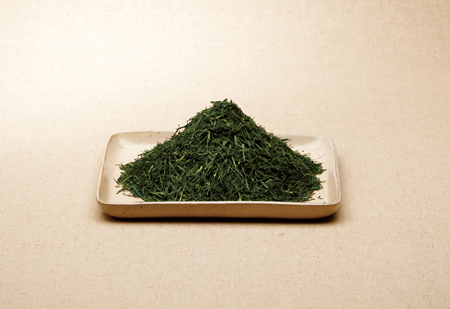 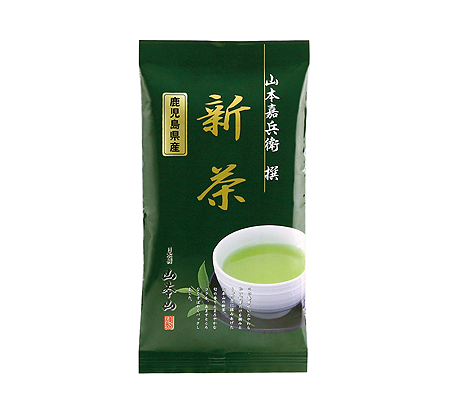 |
|
| 初代はフロンティア精神にあふれた人だったのですね。 I guess the shop founder had a lot of pioneering spirit! |
|
| (山本) | ええ。その精神がずっと受け継がれていて、たとえば6代目は玉露を発明しましたし、9代目である父は、戦後まもなくの昭和22年(1947)に、お茶に加えて海苔を売ることを始めました。業界では初の試みでした。 Yamamoto: That’s right, and that spirit has been passed down for generations. The sixth generation owner invented gyokuro, and the ninth, my father, started selling nori in addition to tea soon after the war ended. In the tea industry, he was the first to try that. *http://en.wikipedia.org/wiki/Gyokuro |
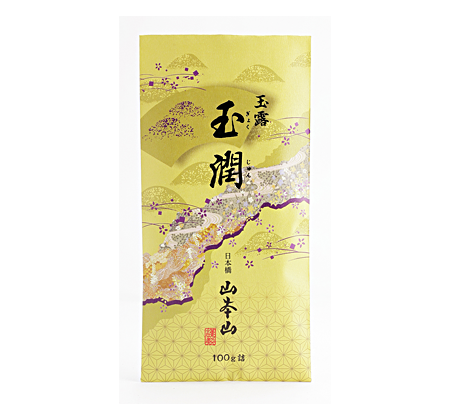 |
|
| 今、売り上げでは、お茶と海苔ではどちらが上ですか? Showing a bright toothy smile is charming in any age and culture, I’m sure. |
|
| (山本) | 海苔が上です。お茶は売り上げの3割、海苔が7割です。ですが、「どちらかを選べ」と究極の選択を迫られたら、私はお茶を選びます。 変えられない過去よりも、変えられる未来が大事です。しかし、未来は過去の中にある。それをつないでいけるところが、続いていくのではないかと思っているからです。 うちだけではありません。「東都のれん会」のお店は皆さん、歴史が変化の連続であることを知っておられる方たちばかりでしょ。時代の変化を見定める能力が高い方たちが、変えてこられたからこそ、今に続いているわけです。 Yamamoto: Nori. Tea comprises about 30 percent of our sales, while nori makes up the other 70 percent. But if I were forced to choose only one or the other, I would choose to sell tea. I believe the future we can change is more important than the past we can’t. Nevertheless, the future can be found by looking at the past. I think the ability to connect the past with the future will result in lasting prosperity. I’m not the only one who feels this way. All the members of the Toto Norenkai association know that history is continuous change, and it’s these people who have a keen ability to understand the changes of the times that have been able to adapt to change and stay in business for a long time. |
| 商売の仕方は変えても、味はどうですか? 変えてきたのでしょうか? What about the flavors of your tea? Have they changed? |
|
| (山本) | 客観的に見れば、味もどんどん変わってきたと思います。ただ、「おいしい」と思うものを売ってきたことだけは変わっていないんです。 とは言っても「おいしい」と いう感覚は人によって違いますよね。いや、一人の人でも、朝と夜とでは味覚が変わります。ですから、店主が「おいしい」と思うものを売る、それでいいんですよ。 うちでは、毎朝、会長である父がお茶を飲んでいます。そして、「おいしい」と言う。それで、その日の商売が始められるわけです。そのことが大切なのだと思います。 Yamamoto: Objectively speaking, I think the flavors have changed quite a bit over the years. However, we have never changed our focus on selling great-tasting tea. All the same, people have different tastes. Even the same person will taste tea differently at night then they did in the morning. So we’ve always sold tea that we think is good, and that’s enough. Every morning my father, who’s our chairperson, drinks our tea, and says, “Oishii” (Delicious). That’s how our business day starts. I think this is really important to us. |
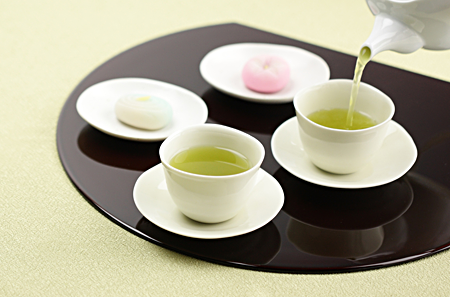 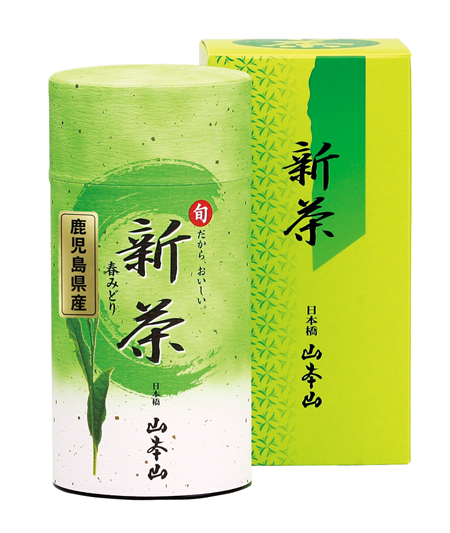 |
|
| とても納得しました。 ところで僕は煎茶が大好きなので、いつももっとおいしく飲む方法はないかなと考えているんですが、秘訣はありますか? That makes total sense. As a matter of fact I love sencha, so I’m always thinking about how to enjoy it even more. Do you have any tips? |
|
| (山本) | 煎茶は、それを作った場所の水を沸かしていれると一番おいしいんです。 煎茶はお茶の葉を蒸して作りますので、同じ水で葉をゆっくりと戻すという考え方です。でも、食べものというのはプロが作ればおいしいけれど、好きな人が作ってくれたらもっとおいしいでしょ。そういうことが大切だと思うのです。 Sencha tastes best when you use water from the area where the tea plants were grown. Sencha is made by steaming the tea leaves, so you can think of it as returning the leaves to the same water. Like food, it tastes delicious when made by a professional, but it tastes even better when someone you like makes it for you. I think that’s important to keep in mind. |
| はい。 Indeed. |
|
| (山本) | それから、また、私たちはお茶をお出しする時に「一服どうぞ」と言いますが、そこには「来てくださってありがとう」とか「ゆっくり休んでいってください」といったもてなしの心が込められています。つまり、お茶は日本の文化なんですね。それを伝えていきたいと思っています。 そうそう。アメリカに帰郷された時も、ぜひ煎茶をお飲みください。当社はアメリカでもお茶を販売していますが、使われているお茶の葉は ブラジルのサンパウロ州の茶園で栽培・製造している茶葉もあるんですよ。 Yamamoto: When we serve tea, we always say to the customer, “Enjoy your tea.” In those words we try to convey a couple different messages, both “Thank you for coming,” and “Relax for a while.” This is part of our “spirit of omotenashi” (Japanese hospitality). Tea is part of Japanese culture, and we want to share that culture. We sell tea in the United States as well, so when you go home I encourage you to drink our sencha there, too. Some of our tea is grown and produced on tea plantations in Sao Paulo in Brazil. |
| エーッ! Really! |
|
| (山本) | 昭和45年(1970)に現地法人を設立して、現在は東京ドーム45個分ほどの茶園を所有しています。日本の総人口は1億人ほどですが、アメリカは日本とはけた違いの大きなマーケットなんです。 昭和50年に設立したアメリカ・ロサンゼルスの「ヤマモトヤマ・オブ・アメリカ」を拠点に、世界の人々に日本の味と文化「もてなしの心」をお届けしたいと取り組んで40年になりました。 Yamamoto: We established a company in Sao Paolo in 1970, and we currently own tea plantations with an area equivalent to 45 Tokyo Domes. The population of Japan is roughly 100 million, but America is a much larger market. So five years later, in 1975, we established Yamamotoyama of America in Los Angeles, and that’s been our base of operations for marketing Japanese tea and our spirit of omotenashi to people all over the world for the last 40 years. |
| そんなに前から事業のグローバル化を進めておられたんですか。 I had no idea you’ve been a global company for so long. |
|
| (山本) | はい。実は私の後は娘が継ぐ予定なのですが、娘はアメリカの大学を卒業し、アメリカ・ロサンゼルスの「ヤマモトヤマ・オブ・アメリカ」で働いています。いつの日か、アメリカで国際結婚をしたらアメリカ生まれ・アメリカ育ちの私の孫ができます。その孫が、やがてお茶を楽しみ、お茶を考えていく時が来たときこそ、本当のグローバル化の始まりといえるのかもしれません。 自分のやりたかったことは、次の代がやってくれる。今、そんな感じがしています。 Yamamoto: That’s right. In fact, the plan is for my daughter to take over the business from me. She graduated from an American university and is working for Yamamotoyama of America. If she marries an American and has a child there, that child raised in America, my grandchild, may grow up to enjoy tea. If that happens then maybe we will start to become a truly global company. The next generation will take care of the things I’m not able to accomplish before I retire. That’s how I feel now. |
| すばらしいお話をたくさんうかがいました。いまから日本橋のお店にも行ってきます。 It was really interesting to hear about your business. I think we’ll head on over to your Nihonbashi shop now. |
|
| (山本) | ぜひ、どうぞ。ゆっくりお茶を楽しんでいってください。 Yamamoto: Please do. And please enjoy your tea! |
| ありがとうございました! Thank you very much! |
|
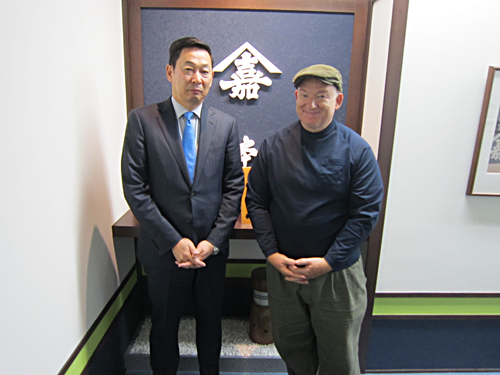 |
|
| (文)太田美代 (英訳)デイビッド・A・セイン |
 1959年、米国生まれ。翻訳家、通訳、英会話経営者(エートゥーゼット英語学校)。カリフォルニア州アズサパシフィック大学で社会学修士号取得。証券会社勤務を経て来日し、多岐にわたって活躍中。 豊富なアイディアと行動力、そして誠実な飾らぬ人柄も万人に愛されている。 著書に『その英語、ネイティブにはこう聞こえます』(主婦の友社)、『使ってはいけない英語』(河出書房新社)、『英語ライティングルールブック』(DHC)、『英語でしゃべらナイト』(NHK出版)など多数。『Mainichi Weekly』(毎日新聞社)の連載や『水は答えを知っている」(The Hidden Messages in Water)等の翻訳も好評。 http://www.smartenglish.co.jp/
1959年、米国生まれ。翻訳家、通訳、英会話経営者(エートゥーゼット英語学校)。カリフォルニア州アズサパシフィック大学で社会学修士号取得。証券会社勤務を経て来日し、多岐にわたって活躍中。 豊富なアイディアと行動力、そして誠実な飾らぬ人柄も万人に愛されている。 著書に『その英語、ネイティブにはこう聞こえます』(主婦の友社)、『使ってはいけない英語』(河出書房新社)、『英語ライティングルールブック』(DHC)、『英語でしゃべらナイト』(NHK出版)など多数。『Mainichi Weekly』(毎日新聞社)の連載や『水は答えを知っている」(The Hidden Messages in Water)等の翻訳も好評。 http://www.smartenglish.co.jp/
最新記事
This post is also available in: 英語







